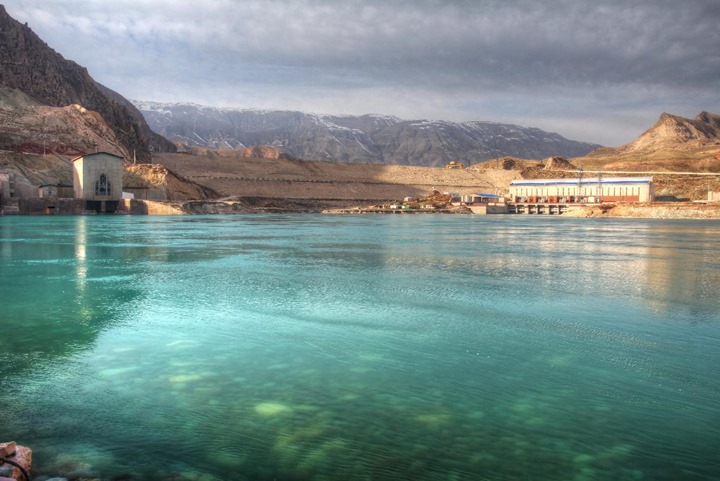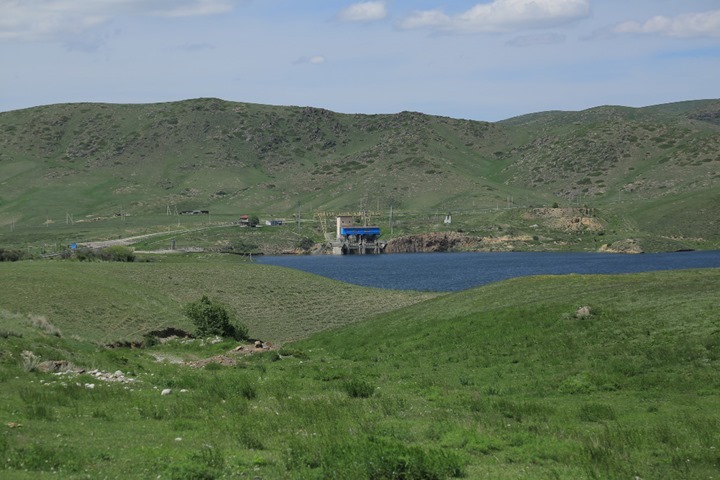Hydropower of Tajikistan: old debts and new projects
Against the background of discussions in Dushanbe on the expansion of Russian-Tajik cooperation in the field of hydropower with the participation of Deputy Minister of Energy of Russia Roman Marshavin, the World Bank (WB) approved the allocation of $650 million. for the construction of the Rogun Dam. According to experts, these two events underline the complexity and versatility of the energy situation in Central Asia, where issues of bilateral cooperation are closely intertwined with large-scale international projects that cause environmental concerns.

The key topic of negotiations between the Deputy Head of the Ministry of Energy of the Russian Federation Roman Marshavin and the Minister of Energy and Water Resources of the Republic of Tajikistan (RT) Daler Djuma and the Minister of Finance Fayziddin Kakhhorzoda was the functioning of the Sangtudinskaya Dam-1 joint venture and the repayment of Tajik debt to Russia for electricity supplied in the amount of $ 333 million.
It should be recalled that Sangtudinskaya Dam-1 was built at the expense of the Russian Federation and Russian energy companies as part of strategic cooperation with Tajikistan in the field of electric power industry. Russia’s investments in the construction of Dams exceeded 16 billion rubles. The first hydroelectric unit of the Dam was commissioned in January 2008. The share of Russian companies in the authorized capital of the joint–stock company is 75% minus one share, the share of Tajikistan is 25% plus one share, the Dam website says.
The energy company “Barki Tojik” (Energy of Tajikistan) had already accumulated a debt of $ 30 million by 2009 (see “NG” dated 11/16/09). Four years later, the debt increased to $66 million. Not seeing an opportunity to pay it, Dushanbe offered Moscow to write it off in exchange for the ratification of the agreement on the 201st military base of the Russian Federation stationed on its territory. Since then, the issue of repayment of debt to the Russian Federation has been raised repeatedly, but to no avail.
Probably, as Andrei Grabatov, an expert on Central Asia and a hydropower engineer, told Nezavisimaya Gazeta, the Tajik side hopes for debt restructuring. The fact is that the negotiations discussed the issue of obtaining by the “System Operator” of the Russian Federation the status of a full member in the Coordinating Electric Power Council of Central Asia (IES CA). The expert explained that this is an advisory body for coordinating the joint work of the energy systems of Central Asia, established in 2004 on the initiative of the Kazakh side. It consists of the heads of the state national electric power companies of the participating countries: JSC “Kazakhstan Electric Grid Management Company”, JSC “National Electric Networks of Uzbekistan”, JSC “National Electric Networks of Kyrgyzstan”, AOHK “Barki Tojik”. The Russian “System Operator” takes part in the work of the CES CA in observer status. Russia is negotiating with Tajikistan on the construction of wind farms in the republic. There is no hurry to invest in large hydropower projects, such as, for example, the Rogun Dam, because this project is expensive – $ 6.2 billion and carries considerable environmental risks.
However, the World Bank in its recent report on the economy of Tajikistan noted that the completion of the Rogun Dam, designed to ensure the energy security of the country, jeopardizes the budgetary stability of the republic.
However, in a new report published in early December, the World Bank called the Rogun Dam “the core of the regional electricity market in Central Asia.” The document states that the completion of the Dam construction by 2037 will meet the country’s domestic energy needs, will contribute to economic growth and increase revenues through exports. The station, having reached full capacity by 2034 (3.78 GW), will increase water resources by 13.3 billion cubic meters. m by 2037 and will provide reliable energy supply for millions of people and businesses. “This will provide flood protection for the facilities of the lower cascade and increase the resilience of agricultural consumers during droughts, as well as provide reliable and affordable energy supply for about 10 million people and industrial enterprises experiencing a shortage of electricity in winter. In a word, the Rogun Dam is favorable both from the point of view of development and from the point of view of ensuring adaptation,” the report emphasizes.
About 70% of the energy produced is planned to be exported to Kazakhstan and Uzbekistan, replacing fossil fuel energy production. The Rogun Dam will contribute to strengthening the energy security of the region and the integration of renewable energy sources.
Following a meeting held in Washington on December 17, the World Bank made a positive decision to allocate $650 million to Tajikistan. for the construction of the Rogun Dam. However, as Nezavisimaya Gazeta has learned, “the financing of the high-risk project was approved in advance, with its reassessment in July 2025.” The fact is that on the eve of the World Bank meeting, the international ecological coalition Rivers without Borders presented its report (in English and Russian) with an analysis of alternative options for completing the Rogun Dam project in Tajikistan, they propose to consider alternative ways of developing Tajikistan’s energy sector. Without this, as noted in the report, it will not be possible to choose the most effective option for completing the project, which involves reducing the risks of negative consequences and increasing the return on huge investments of $6.4 billion needed to create a dam with a height of 335 m.
According to environmentalists in their report, even if a decision is made on the complete completion of the Rogun Dam according to the maximum option with the construction of the tallest dam in the world, the acute problems to overcome which a giant hydroelectric power station is being built will still remain unresolved. In particular, rolling power outages in Tajikistan will continue as before, at least until 2036.
The creation of a maximum-sized reservoir will multiply the risks of the negative impact of the Rogun Dam downstream: on the UNESCO World Heritage Site “Tugai Forests of the Tigrovaya Balka Reserve”, on the last populations of endangered species of sturgeon in Vakhsh, as well as on the fertile plains along the rivers, where at least in Tajikistan, Uzbekistan, Turkmenistan and Afghanistan live at least 7 million people whose well-being depends entirely on irrigation farming.
The report demonstrates that even in modern realities such a negative scenario can still be avoided. The same amount of funding, but spent on the construction of a less high dam of the Rogun Dam, combined with the development of solar power plants combined into a single energy complex using the design funds saved in this way, will lead to significantly less economic, social and humanitarian damage from the implementation of the Rogun project. In particular, reducing the design height of the Rogun Dam by 70 m will avoid the resettlement of about 40 thousand local residents, and thus forced resettlement will affect only a third of the number of people who are planned to be resettled now.
Victoria Panfilova (Nezavisimaya Gazeta)


